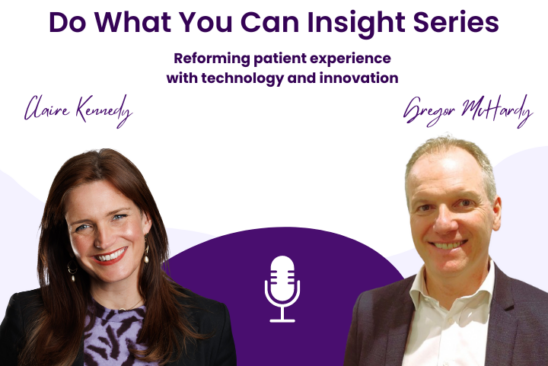Authors
It might seem surprising that only around 50% of calls to the ambulance service require a “blue light” conveyance to an emergency department.
The rest of an ambulance crew or call handlers’ work involves delivering on site treatment, over the phone advice, or referral to other services.
As such, it seems unreasonable that the political narrative and public perception of the ambulance service often only view it as an emergency service – neglecting the proactive, agile and community-focused role it plays in providing care.
Ambulance services are key to delivering the central vision of the NHS: to improve the health of the population, reduce health inequalities and deliver better clinical outcomes at good value for money. It’s every part of the system’s business. If the ambulance sector is viewed exclusively as an emergency responder, we risk undervaluing its role and underusing it as a result.
To help shift this perception, individual ambulance trusts have taken innovative approaches to partnership working; taking practical steps to develop the ambulance sector’s role in delivering population health improvement.
Here are some of the examples we’ve seen at PPL, which we think are worth learning from:
Using data – taking a public health approach
The ambulance sector holds vast amounts, of often unique, health data. Ambulance trusts can effectively collect activity at a regional, system and neighbourhood level, identifying areas of potential unmet need. This could be areas where a lack of access to community care services drives excess demand for urgent and emergency care.
This kind of insight can and should inform approaches to planning services across the system. However, ambulance trusts do not always have the analytical capacity in-house or the links to the right parts of the system to apply and share these data insights effectively.
Systems should consider how their analytical teams can work with ambulance trusts to realise these benefits. Ambulance trusts can also bring public health expertise in house to help develop their services in response to insights.
Some trusts have previously recruited public health registrars and seen great success in driving this work forward. However, this practise is far from common place.
Incidental reporting and prevention
As well as using data to support population health approaches to planning services, ambulances can also be an important source of referral to other parts of the system.
We know that the complaint or concern that a person contacts the ambulance service with will rarely occur in isolation. For example, an older person may call 999 following a fall, which an ambulance crew can attend – but behind this may be an undiagnosed medical condition or unseen social factors like poor housing conditions or isolation.
In these kind-of interactions, ambulance crews gather large amounts of data and insight. This puts the ambulance sector in a unique position, but the incidental health data ambulance services collect is not always seen by other parts of the system.
Whilst the ambulance crew can address the immediate need – they are not equipped to address the long-term and persistent factors that led to a fall.
As such, recording and reporting these incidental findings to primary care can be an effective way of helping to address drivers of poor health, reduce demand on emergency care and support population health improvement at a system level.
Ambulance services around the country have run pilots on using incidental reporting and have realised the early benefits, but it is a long way from being business as usual. Making it so will require additional capacity in the ambulance sector and primary care in the short-term, to unlock health improvement and prevention gains in the long-term.
This is not an “invest to save” argument, it is about working more effectively across organisational boundaries between primary care and emergency care – there are upfront and opportunity costs associated with doing this.
Challenges of shifting to a public health approach
One of the central disincentives to developing a population health approach in an ambulance trust is that the benefits are realised over the long-term. The risk, accountability and pressures that trust leaders face are very much in the present.
The last winter saw operational performance improve drastically, but still all key performance targets across urgent and emergency care were routinely missed. This feeds through to public perception which in turn informs the policy response. People rightly expect timely response from ambulance services in an emergency. As such, ambulance leaders are subject to stringent performance management to hit these targets.
Given the pressure and expectation to deliver performance improvements immediately, despite the insufficient resource and capacity within the sector, it is often all too difficult for ambulance leaders to find time to deliver the kind of strategic leadership needed to deliver the shift to a population health approach.
Ambulance sector: Key role in public health improvement
This vicious cycle can lead to short-termism. We need to see developing the ambulance sector’s role in health improvement as central to delivering operational performance improvement, not an add on.





